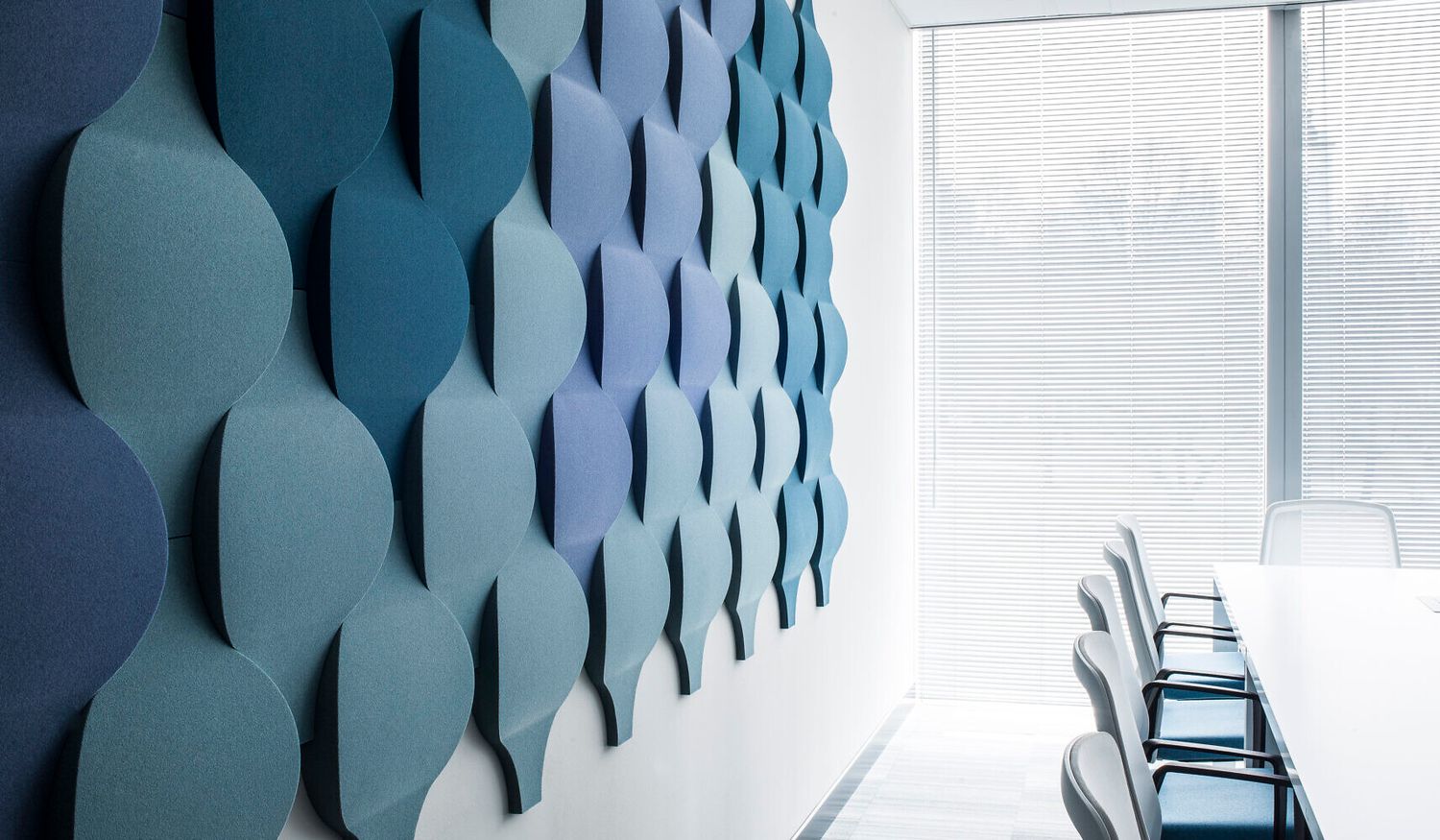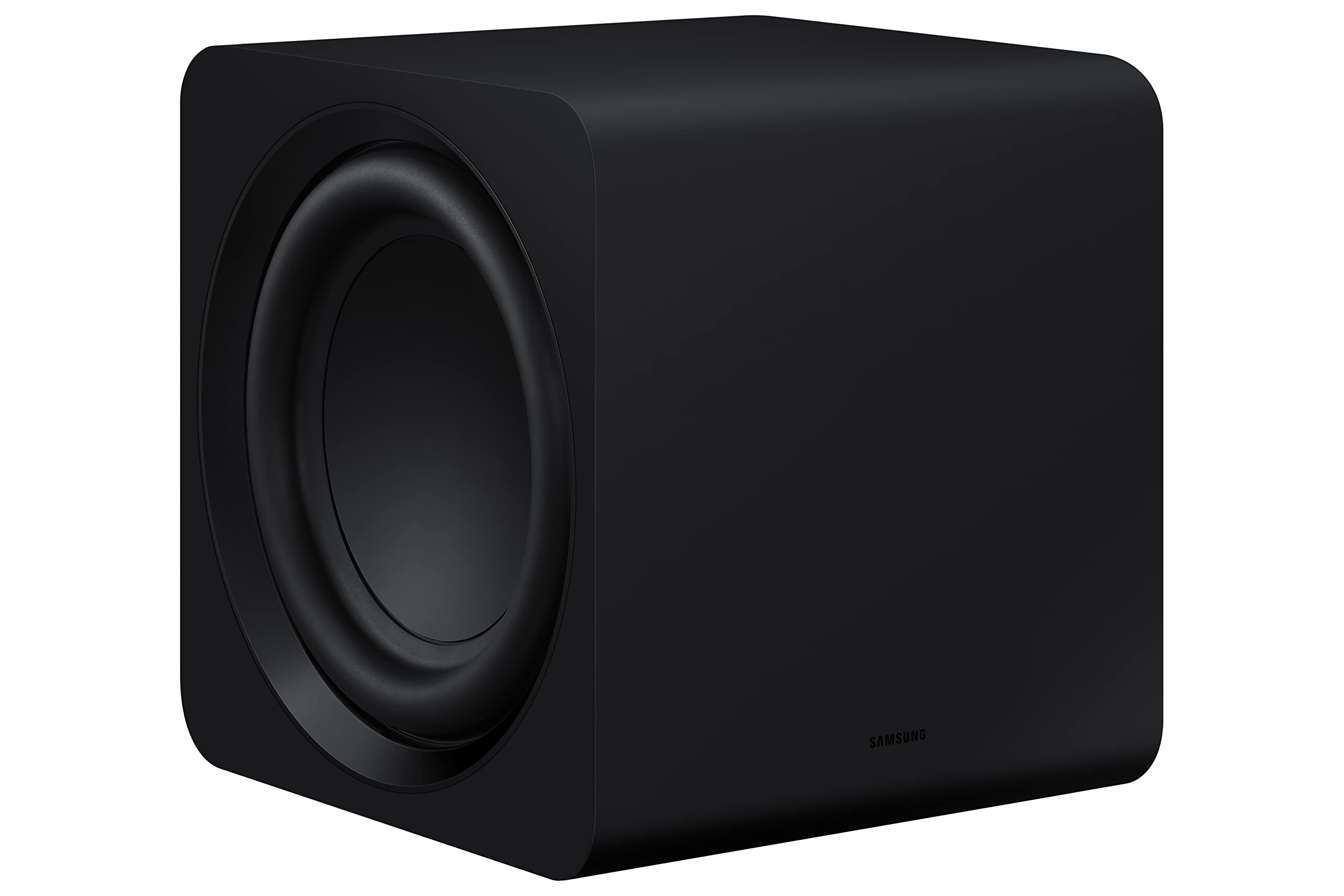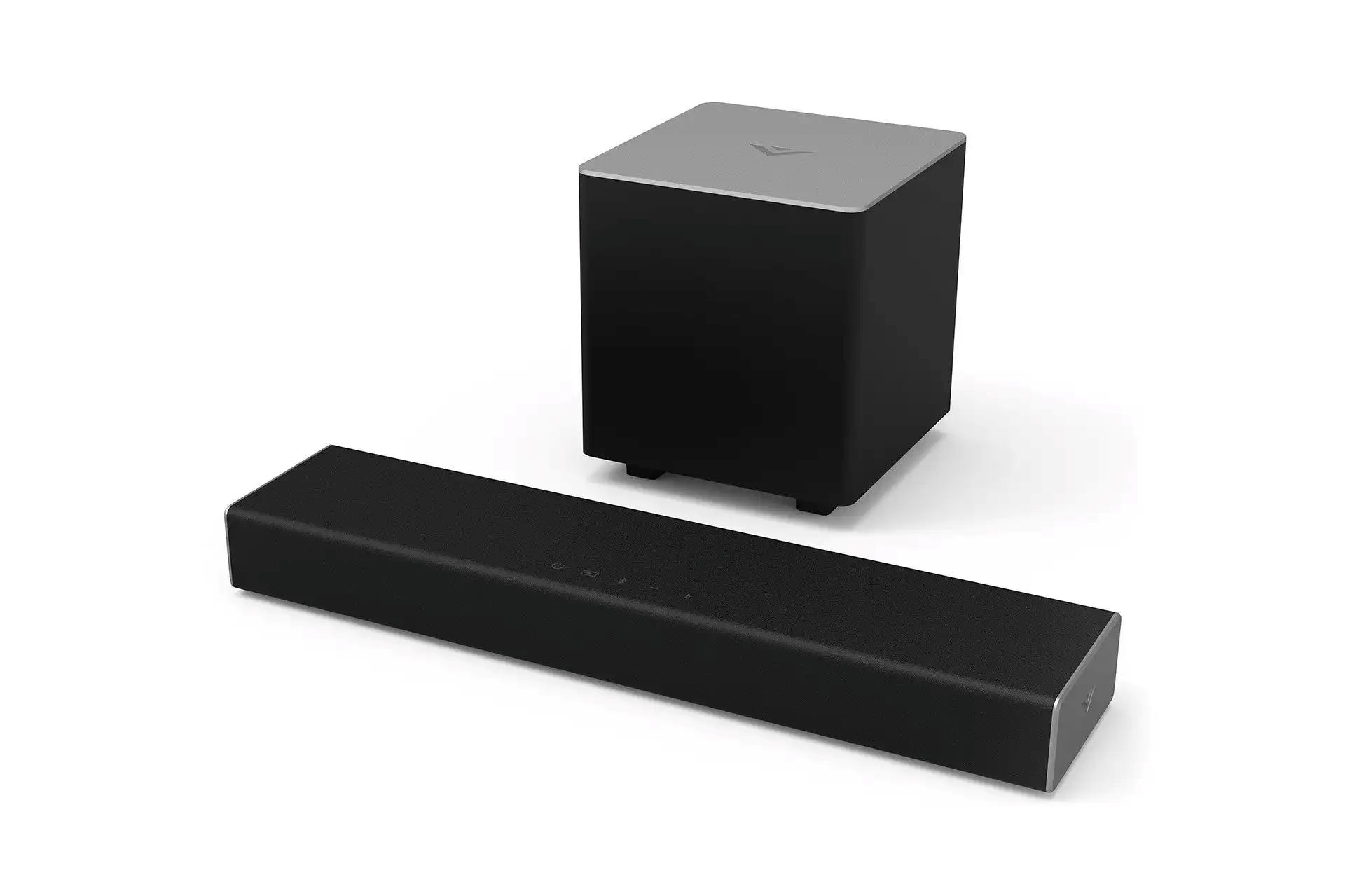Home>Production & Technology>Soundproofing>Why Soundproofing Doesn’t Work


Soundproofing
Why Soundproofing Doesn’t Work
Published: January 27, 2024
Learn why soundproofing doesn't work effectively and discover better solutions for reducing noise with our expert tips and advice. Improve your living or workspace today!
(Many of the links in this article redirect to a specific reviewed product. Your purchase of these products through affiliate links helps to generate commission for AudioLover.com, at no extra cost. Learn more)
Table of Contents
Introduction
Welcome to the world of soundproofing! If you’re looking for ways to improve the acoustics of a space or reduce noise pollution, soundproofing may seem like the perfect solution. However, there are several factors to consider before diving into the world of soundproofing. In this article, we will explore the concept of soundproofing, debunk some common misconceptions, and delve into the reasons why soundproofing methods may not always yield the desired results.
Soundproofing refers to the techniques and materials used to block or absorb sound waves, preventing them from entering or leaving a space. The goal is to create a more peaceful and quiet environment, whether it’s in a home, office, recording studio, or any other space that requires noise control.
While the concept of soundproofing may seem straightforward, achieving effective soundproofing can be a complex and challenging process. Many people mistakenly believe that simply installing some foam panels or sealing gaps will magically eliminate all unwanted noise. However, the truth is that soundproofing requires a comprehensive approach that takes into account the specific characteristics of the space and the nature of the sound sources.
Soundproofing is not a one-size-fits-all solution. Different spaces have different acoustic properties and require tailored approaches. Additionally, there is no universal method that can completely eliminate all types of noise. However, with a good understanding of soundproofing principles and the right techniques, it is possible to significantly reduce noise levels and create more comfortable environments.
In the following sections, we will discuss common misconceptions about soundproofing, explore why soundproofing methods may fail, and highlight the importance of proper construction and materials in achieving effective sound insulation. We will also provide some effective soundproofing techniques that you can implement to create a quieter and more peaceful space.
So, if you’re ready to dive into the world of soundproofing and learn more about this fascinating topic, let’s get started!
Understanding Soundproofing
Before delving into the intricacies of soundproofing, it’s important to have a basic understanding of how sound travels and interacts with different materials. Sound is created when an object vibrates, causing the air particles around it to vibrate as well. These vibrating particles then transmit the sound waves through the air to our ears.
Soundproofing aims to reduce the transmission of sound waves by minimizing the vibrations and reducing the pathways through which sound can travel. There are two primary ways to achieve soundproofing: blocking sound and absorbing sound.
Blocking sound refers to the process of creating a physical barrier that prevents sound waves from entering or leaving a space. This can be achieved by using materials with high mass and density, such as thick walls, doors, and windows. The principle behind blocking sound is to create a solid barrier that reflects or absorbs sound waves, preventing them from passing through.
Absorbing sound, on the other hand, involves using materials that absorb sound waves, converting them into heat energy. This helps to reduce the reverberation and echoes within a space, making it quieter. Common materials used for sound absorption include acoustic panels, foam, and fiberglass insulation.
It’s important to note that while sound blocking and sound absorption are effective methods, they are not always interchangeable. The choice between the two depends on the specific sound issues you are trying to address. For instance, if you want to prevent external noise from entering a room, you would focus more on sound blocking techniques. However, if you want to improve the acoustics within a room, sound absorption techniques would be more suitable.
Understanding the principles of sound transmission and the differences between sound blocking and sound absorption is crucial when designing a soundproofing strategy. By taking a holistic approach and combining both techniques, you can maximize the effectiveness of your soundproofing efforts.
In the next sections, we will explore some common misconceptions about soundproofing and why soundproofing methods may not always provide the desired results. Stay tuned!
Common Misconceptions about Soundproofing
When it comes to soundproofing, there are several common misconceptions that can lead to unrealistic expectations and ineffective solutions. Let’s debunk some of these misconceptions to help you better understand what soundproofing can and cannot achieve.
Misconception 1: Soundproofing eliminates all noise
One of the biggest misconceptions about soundproofing is that it can completely eliminate all noise. While soundproofing techniques can significantly reduce noise levels, achieving complete silence is often not possible, especially in highly populated or urban areas. Soundproofing aims to minimize the transmission of sound waves, but some noise may still penetrate through walls, floors, or ceilings, especially if they are not properly treated.
Misconception 2: Soundproofing is a one-time solution
Another common misconception is that once you apply soundproofing measures, you never have to worry about noise again. The truth is that soundproofing should be an ongoing process, as new sources of noise may arise or existing ones may change over time. Regular maintenance and evaluation of your soundproofing measures are essential to ensure their effectiveness in the long run.
Misconception 3: Adding more foam panels or insulation will solve the problem
Many people believe that simply adding more foam panels or insulation will solve their soundproofing issues. While these materials can be effective in certain situations, blindly adding more without considering the specific sound sources and characteristics of the space can result in diminishing returns. It’s crucial to assess the specific needs of your space and implement a comprehensive soundproofing strategy that addresses the root causes of the noise problem.
Misconception 4: Any material can be used for soundproofing
Not all materials are equally effective for soundproofing. While some materials, like acoustic panels and mass-loaded vinyl, are specifically designed for soundproofing purposes, others may not provide sufficient insulation against sound waves. The choice of materials should be based on their soundproofing properties, density, and thickness, among other factors.
Misconception 5: Soundproofing is only for music studios or recording booths
Another misconception is that soundproofing is only necessary for music studios or recording booths. In reality, soundproofing can be beneficial in a wide range of settings, including homes, offices, classrooms, restaurants, and even bedrooms. Any space where noise can cause disturbances or affect the overall comfort and well-being of individuals can benefit from effective soundproofing measures.
By understanding these common misconceptions, you can approach soundproofing with realistic expectations and make informed decisions about the most appropriate solutions for your specific needs. In the next section, we will explore the reasons why soundproofing methods may fail, shedding light on some important considerations to keep in mind. Stay tuned!
Reasons Why Soundproofing Methods May Fail
While soundproofing can be effective in reducing noise levels, there are certain reasons why soundproofing methods may not always yield the desired results. Understanding these reasons can help you identify potential pitfalls and avoid common mistakes in your soundproofing endeavors.
Improper Identification of Noise Sources
One of the main reasons why soundproofing methods may fail is the improper identification of noise sources. It’s essential to accurately determine the origin of the noise and understand how it enters your space. Without identifying the root cause, your soundproofing efforts may be focused on the wrong areas, leading to ineffective solutions.
Inadequate Insulation and Construction
The effectiveness of soundproofing is heavily influenced by the quality of insulation and construction materials used. If walls, floors, or ceilings are poorly insulated or have gaps and cracks, sound waves can easily travel through, rendering your soundproofing efforts futile. It’s crucial to ensure proper construction and insulation to create a solid barrier against noise transmission.
Insufficient Mass and Density of Materials
The mass and density of soundproofing materials play a significant role in their effectiveness. Thin and lightweight materials are generally less effective at blocking sound waves compared to materials with higher mass and density. Using materials specifically designed for soundproofing, such as mass-loaded vinyl or soundproof drywall, can greatly enhance the efficiency of your soundproofing measures.
Inadequate Coverage and Sealing
Even if you have chosen the right soundproofing materials and techniques, inadequate coverage and sealing can compromise the effectiveness of your soundproofing efforts. Gaps, cracks, or incomplete coverage of soundproofing materials allow sound waves to leak through, reducing the overall sound insulation capabilities. It’s crucial to ensure proper installation and thorough sealing of all openings to minimize sound leakage.
Use of Incompatible Soundproofing Techniques
Using incompatible soundproofing techniques can also hinder the effectiveness of your measures. For example, combining sound absorption materials with sound blocking techniques without a clear understanding of their compatibility can lead to suboptimal results. It’s important to choose techniques that complement each other and align with your specific soundproofing goals.
Unrealistic Expectations and Budget Constraints
Lastly, having unrealistic expectations or facing budget constraints can impact the outcome of your soundproofing efforts. It’s important to set realistic goals based on the specific needs of your space and available resources. If you have limited funds, focusing on improving insulation, sealing gaps, and strategically addressing the most critical noise sources can still yield noticeable improvements.
By understanding these reasons why soundproofing methods may fail, you can approach your soundproofing project with a more informed and realistic mindset. In the next section, we will explore the crucial role of proper construction and materials in achieving effective sound insulation. Stay tuned!
The Role of Proper Construction and Materials
When it comes to soundproofing, proper construction and the use of appropriate materials are crucial elements in achieving effective sound insulation. Without the right construction techniques and soundproofing materials, your efforts to create a quieter environment may fall short. Let’s explore the role of proper construction and materials in soundproofing.
Construction Techniques
High-quality construction techniques are essential for soundproofing success. This includes ensuring solid and well-insulated walls, floors, and ceilings. Double-walled constructions with an air gap in between can provide an additional layer of sound insulation. Additionally, using resilient channels or decoupling techniques can help reduce the transfer of vibrations and sound waves through the building structure. Proper construction techniques create a solid foundation for effective soundproofing measures.
Soundproofing Materials
The choice of soundproofing materials is equally vital for achieving the desired results. There are numerous materials available that offer different levels of soundproofing capabilities. Some commonly used materials include mass-loaded vinyl, soundproof insulation, acoustic panels, and soundproof drywall. These materials are designed to absorb, block, or dampen sound waves, reducing noise transmission.
Mass-loaded vinyl is a popular material used for blocking sound. It is a heavy, flexible sheet that is installed on walls, ceilings, and floors to create a barrier against sound waves. It is effective in reducing airborne noise and acts as a sound barrier between spaces.
Soundproof insulation, such as mineral wool or fiberglass, is used to absorb sound waves and reduce reverberation. It is often installed within walls, ceilings, or floors to improve the acoustic properties of a space.
Acoustic panels are another commonly used material that helps absorb sound waves, reducing echoes and improving the overall acoustics of a room. These panels are available in various designs and can be installed on walls or ceilings to enhance sound absorption.
Soundproof drywall is an excellent choice when creating walls with high soundproofing capabilities. It is made with multiple layers of gypsum board and viscoelastic polymers, which effectively reduce noise transmission between rooms.
In addition to these specific materials, it’s also essential to consider the quality of seals and gaskets used around windows, doors, and other openings. Proper sealing ensures that sound doesn’t leak through small gaps or cracks, undermining your soundproofing efforts.
Combining Construction and Materials
The effectiveness of soundproofing is amplified when proper construction techniques and soundproofing materials are combined. Solid construction techniques create a sturdy structure that minimizes sound transmission, while soundproofing materials absorb or block sound waves, further enhancing the acoustic insulation. The synergy between construction and materials significantly improves the overall soundproofing capabilities of a space.
It’s important to note that the specific construction techniques and materials used will depend on the nature of the noise issue and the characteristics of the space. Consulting with a soundproofing professional can help determine the most appropriate options for your specific needs.
In the next section, we will explore some effective soundproofing techniques that you can implement to create a quieter and more peaceful space. Stay tuned!
Effective Soundproofing Techniques
When it comes to soundproofing, there are several effective techniques that can help create a quieter and more peaceful environment. These techniques address various aspects of sound transmission and can be implemented in different spaces, from homes and offices to studios and commercial buildings. Let’s explore some of these effective soundproofing techniques.
1. Insulate Walls, Floors, and Ceilings
A crucial step in soundproofing is insulating the walls, floors, and ceilings of a space. This involves using soundproofing materials, such as mass-loaded vinyl or soundproof insulation, to create a barrier against sound waves. Installing these materials within walls and ceilings helps absorb and block sound, while insulating floors can reduce impact noise. Effective insulation significantly improves the overall soundproofing capabilities of a room.
2. Seal Gaps and Cracks
Gaps and cracks around windows, doors, and other openings can be a major source of sound leakage. Effective sealing using weatherstripping materials, acoustic caulk, or door sweeps can prevent sound from seeping through these spaces. Paying attention to small details and ensuring a tight seal can significantly enhance the soundproofing performance of a room.
3. Use Soundproofing Curtains or Window Treatments
Windows are typically weak points when it comes to sound transmission. The use of soundproofing curtains or window treatments, which are made with specialized materials designed to absorb or block sound, can significantly reduce noise entering or exiting through windows. These curtains can be an easy and cost-effective solution for soundproofing rooms with large windows.
4. Install Acoustic Panels
Acoustic panels are versatile soundproofing solutions that can be used to improve the acoustics of a room by absorbing sound waves and reducing echoes. They are available in various sizes, shapes, and designs and can be installed on walls and ceilings. Acoustic panels are commonly used in recording studios, home theaters, and offices to create a more controlled acoustic environment.
5. Upgrade Doors and Windows
Doors and windows are often weak points in terms of soundproofing. Upgrading to solid-core doors or installing soundproof doors and windows can significantly reduce noise transmission. These specialized doors and windows are designed with soundproofing materials and construction techniques to create a more effective barrier against noise.
6. Use Soundproofing Underlays
If you have hard flooring surfaces like hardwood or laminate, using soundproofing underlays beneath the flooring can help reduce impact noise and vibrations. These underlays, often made of materials like rubber or cork, act as a buffer, absorbing and dampening the sound energy created by footsteps or moving furniture.
7. Implement Decoupling Techniques
Decoupling is a technique that involves creating air gaps or using resilient channels to separate building components. This technique prevents sound vibrations from traveling through interconnected surfaces. By decoupling walls, floors, or ceilings, the transfer of sound waves can be significantly reduced, resulting in better sound insulation.
These are just a few effective soundproofing techniques that can be implemented to create a more peaceful and quiet environment. It’s important to note that the specific combination of techniques will depend on the nature of the sound issue and the characteristics of the space. Consulting with a soundproofing professional can help tailor a solution that best suits your needs.
Next, let’s summarize the key insights from this article before concluding our exploration of soundproofing.
Conclusion
Soundproofing is a complex and multi-faceted process that involves understanding the principles of sound transmission, choosing the right techniques, and using appropriate materials. While it may not be possible to achieve complete silence, effective soundproofing can significantly reduce noise levels and create a more peaceful and comfortable environment.
In this article, we have explored the concept of soundproofing and debunked some common misconceptions. We have also discussed reasons why soundproofing methods may fail, emphasizing the importance of proper construction techniques and materials in achieving effective sound insulation.
Additionally, we have explored various soundproofing techniques, including insulation, sealing gaps, using soundproofing curtains, installing acoustic panels, upgrading doors and windows, using soundproofing underlays, and implementing decoupling techniques. These techniques can be combined and tailored to suit the specific needs of different spaces, improving their soundproofing performance.
It’s important to approach soundproofing with realistic expectations and a thorough understanding of the factors that impact sound transmission. Proper planning, careful assessment of noise sources, and consideration of construction techniques and materials are key to successful soundproofing projects.
Whether you’re looking to create a quiet home environment, improve the acoustics of a recording studio, or reduce noise pollution in a workplace, soundproofing can provide effective solutions. Consulting with a soundproofing professional can help you navigate the complexities and choose the most appropriate techniques and materials for your specific needs.
Remember, soundproofing is a continuous process that may require periodic adjustments and updates. By taking the time to understand the principles behind soundproofing and implementing the right techniques, you can create a more peaceful and enjoyable space that is free from unwanted noise.











